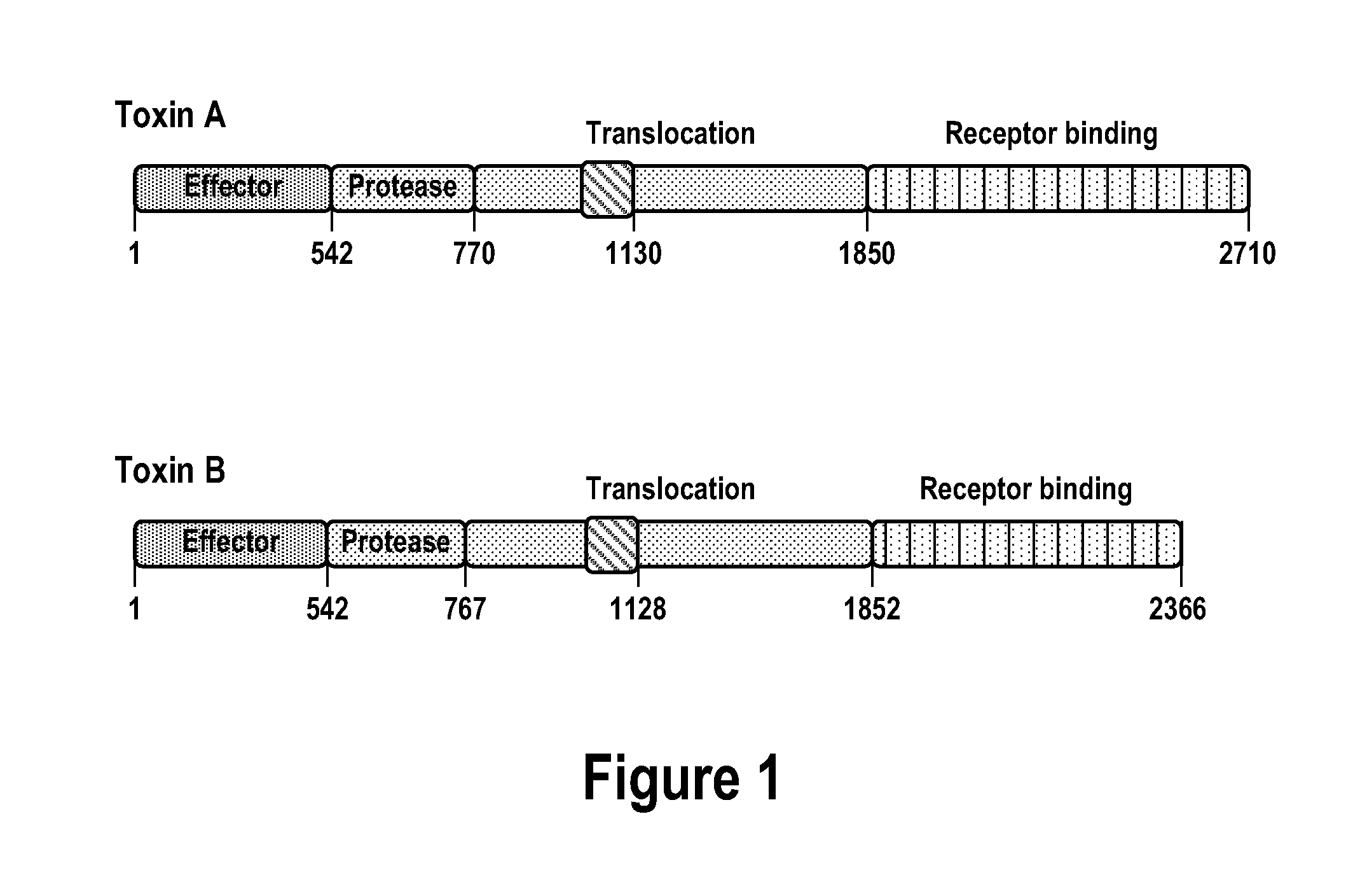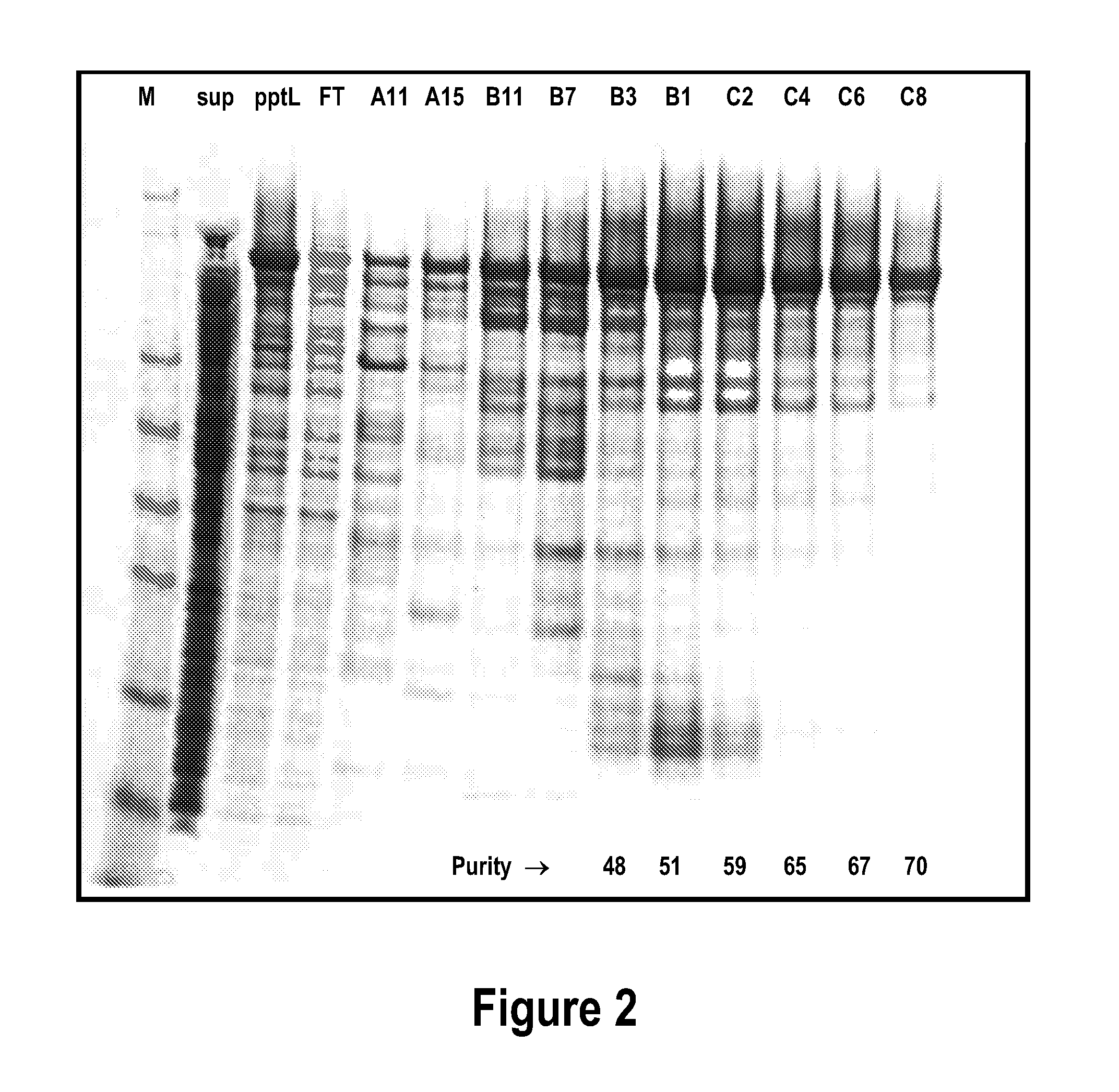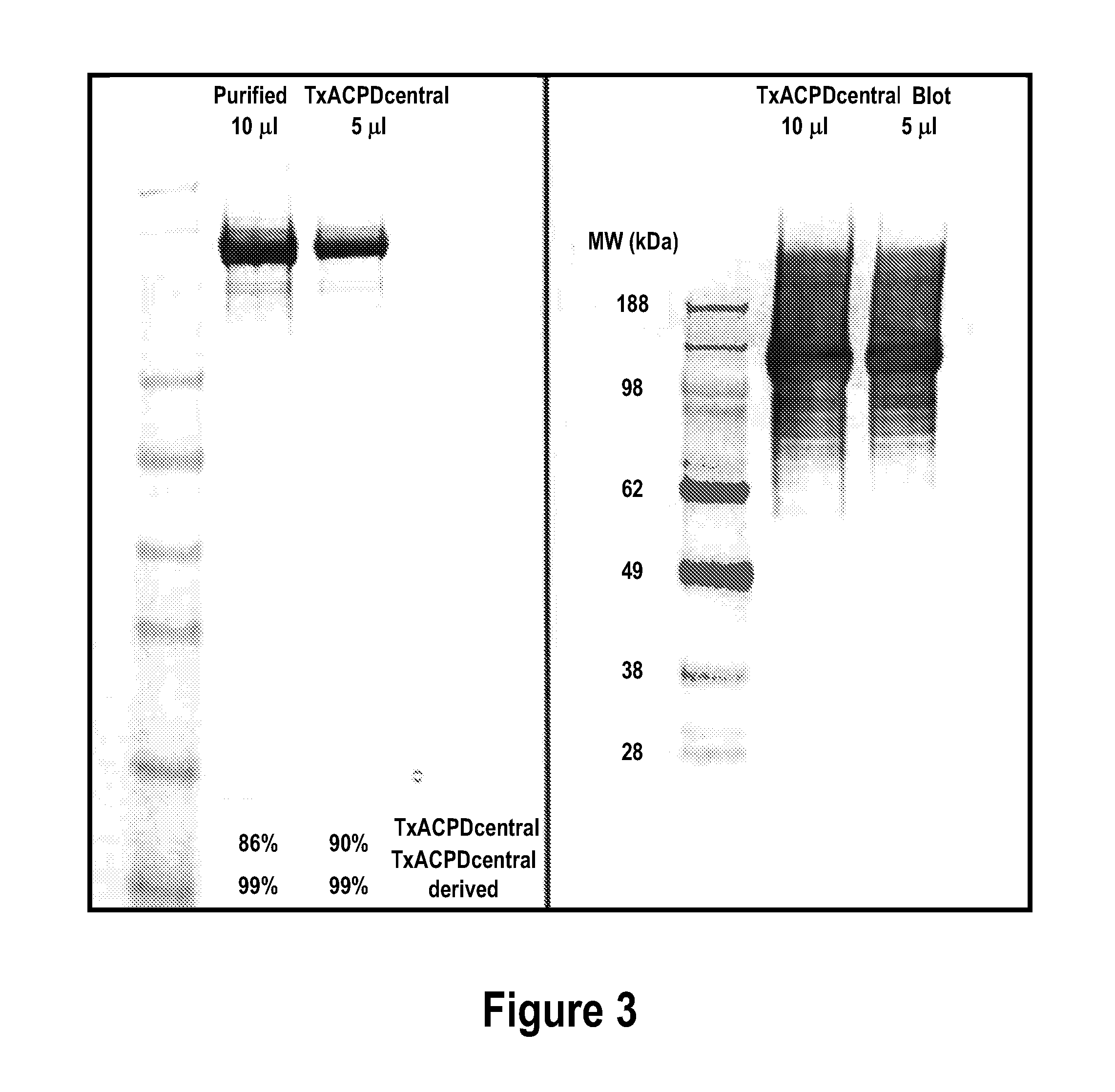Clostridium difficile antigens
a technology of clostridium difficile and antigens, applied in the field of antigens, can solve the problems of poor toxin-neutralising effect of ru fragments and difficult to manufacture in large quantities, and achieve the effect of protecting (toxin-neutralising) immune responses, good toxin-neutralising immune responses, and easy manufacturing in large quantities
- Summary
- Abstract
- Description
- Claims
- Application Information
AI Technical Summary
Benefits of technology
Problems solved by technology
Method used
Image
Examples
example 1
Expression and Purification of Toxin B Fragment Recombinant Fragment Residues 767-1852 as a Fusion Protein with Thioredoxin (his6TrxTxBcentral)
Expression
[0159]L-broth (100 ml) supplemented with 200 μg / ml ampicillin and 0.4% glucose was inoculated with a scrape from a glycerol freeze (BL21 (DE3) E. coli harbouring plasmid pET59His6TrxTxBcentral) and maintained overnight at 30° C. and 180 rpm. The overnight culture was used as a 2.5% inoculum for Terrific Broth (4×1 L in 2.5 L unbaffled flasks) supplemented with 200 μg / ml ampicillin and 0.2% glucose. Cultures were maintained at 37° C. with orbital shaking (180 rpm) to an absorbance at 600 nm of 0.6. The temperature of the cultures was reduced to 16° C. and protein expression induced with the addition of 1 mM IPTG. The culture was maintained overnight at 16° C. with orbital shaking as before. Cell paste (60 g) was harvested by centrifugation (Sorvall RC3BP centrifuge, H6000A rotor, 4000 g for 20 minutes).
Immobilised Nickel Affinity Pur...
example 2
Expression and Purification of Toxin A Fragment Recombinant Fragment Residues 542-1850 (TxACPD)
[0161]L-broth (100 ml) supplemented with 100 μg / ml ampicillin and 0.2% glucose was inoculated with a glycerol freeze (BL21 (DE3) E. coli harbouring plasmid pET59TxACPDcentral). The culture was maintained (37° C., 180 rpm) to an absorbance at 600 nm of 0.6. The 100 ml culture was used as a 2% inoculum for Terrific Broth (4×0.75 L) supplemented with 200 μg / ml ampicillin and 0.2% glucose. Cultures were maintained at 37° C. with orbital shaking (180 rpm) to an absorbance at 600 nm of 0.6. The temperature of the cultures was reduced to 16° C. and protein expression induced 1 hour later with the addition of 1 mM IPTG. The culture was maintained overnight at 16° C. with orbital shaking as before. Cell paste (37 g) was harvested by centrifugation (Sorvall RC3BP centrifuge, H6000A rotor, 4000 g, 20 minutes) and stored at −80° C.
[0162]Cells (37 g) were resuspended with 260 ml buffer (20 mM Tris, 50 ...
example 3
Expression and Purification of Residues 27-401 of C. difficile Protein CD2767
[0166]A synthetic gene which encodes residues 27-401 of C. difficile protein CD2767 was synthesised commercially with its codon bias optimised for expression in a host such as E. coli. The gene was inserted into a pET28a expression vector and transformed into a BL21 E. coli expression strain using standard molecular biology procedures. The E. coli expression strain was grown and protein expression induced with IPTG essentially as described in Example 1 except kanamycin was used in place of ampicillin. Cell pellets were either used directly or frozen at −20° C.
[0167]For protein extraction, cells were thawed and resuspended in 50 mM Tris HCl pH 8.0 buffer containing 0.5 M NaCl and 20 mM imidazole, sonicated (6×30 sec with 30 sec cooling after each) and then centrifuged at 47000×g for 20 min. The His6-tagged residue 27-401 CD2767 polypeptide was then purified from the supernatant fluid by using immobilised met...
PUM
| Property | Measurement | Unit |
|---|---|---|
| time | aaaaa | aaaaa |
| time | aaaaa | aaaaa |
| concentrations | aaaaa | aaaaa |
Abstract
Description
Claims
Application Information
 Login to View More
Login to View More - R&D
- Intellectual Property
- Life Sciences
- Materials
- Tech Scout
- Unparalleled Data Quality
- Higher Quality Content
- 60% Fewer Hallucinations
Browse by: Latest US Patents, China's latest patents, Technical Efficacy Thesaurus, Application Domain, Technology Topic, Popular Technical Reports.
© 2025 PatSnap. All rights reserved.Legal|Privacy policy|Modern Slavery Act Transparency Statement|Sitemap|About US| Contact US: help@patsnap.com



